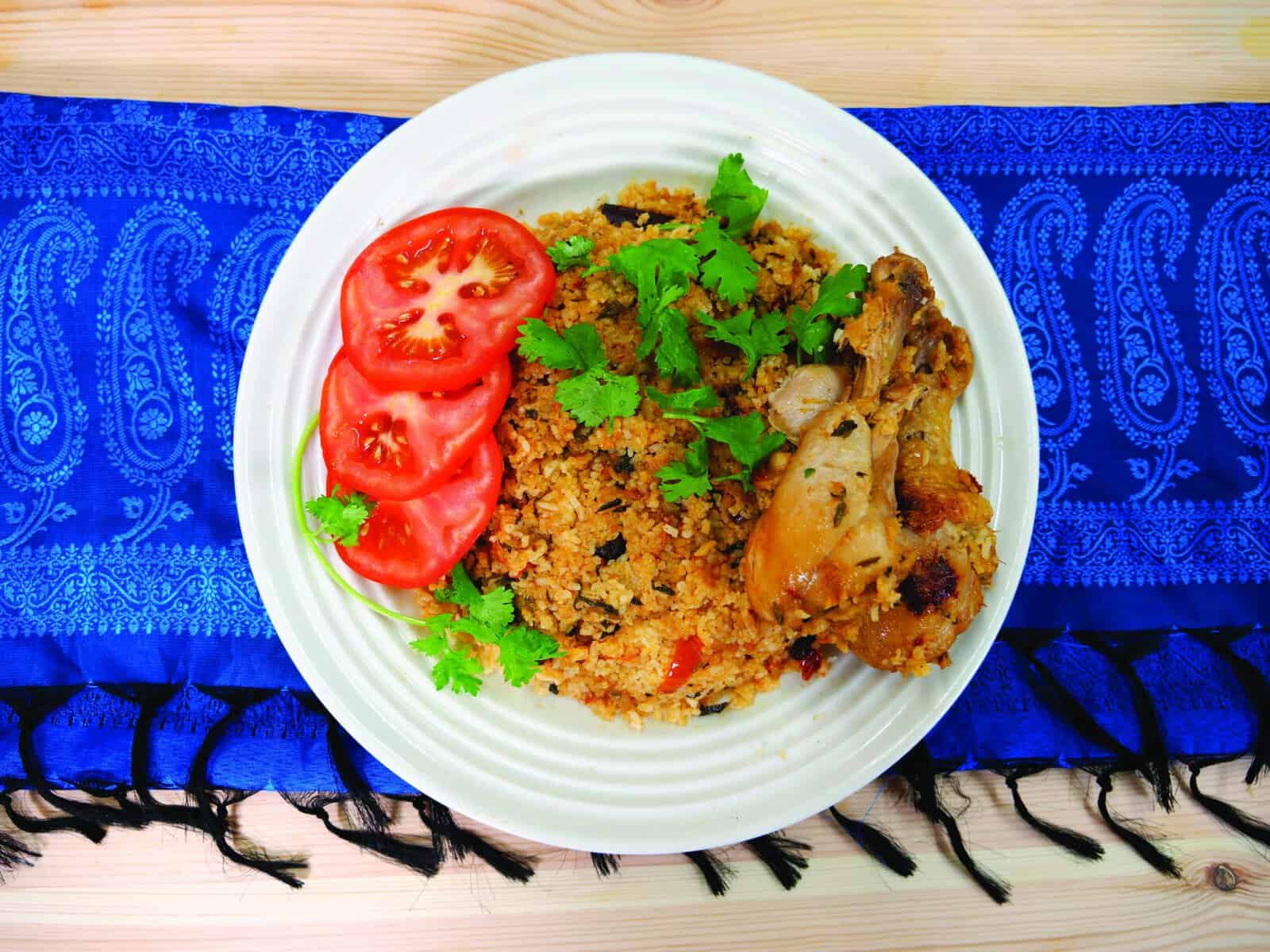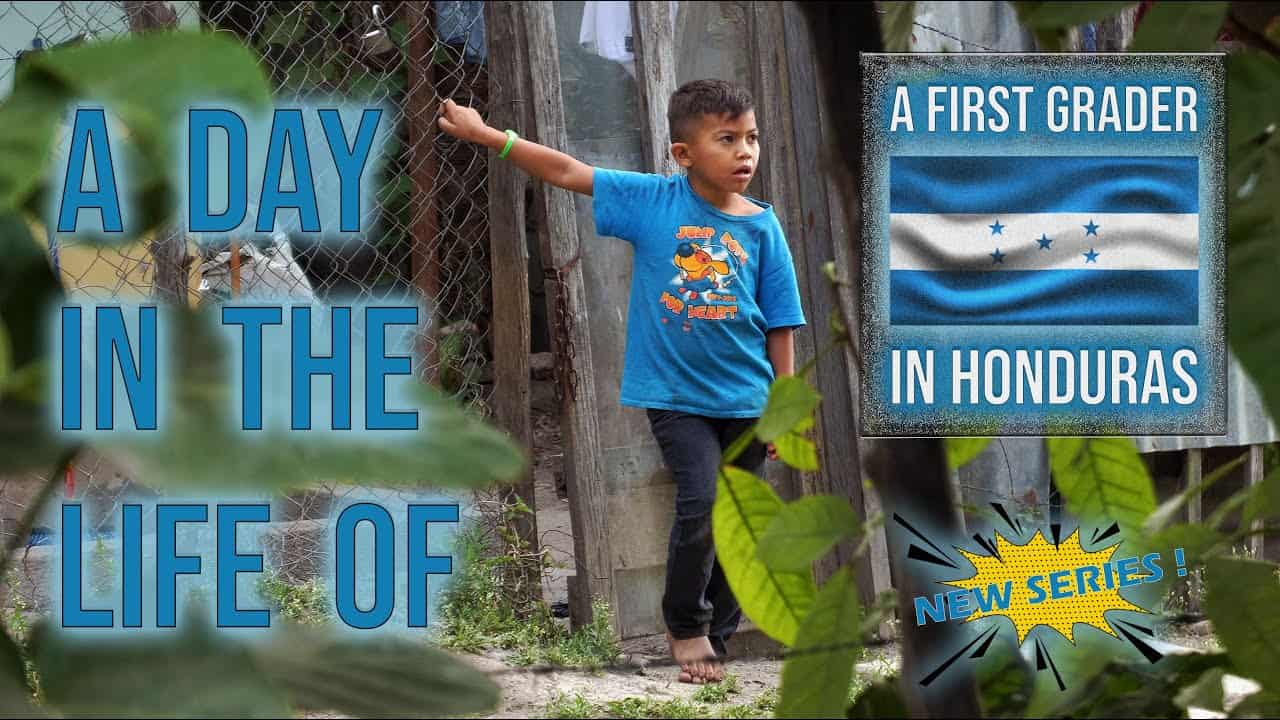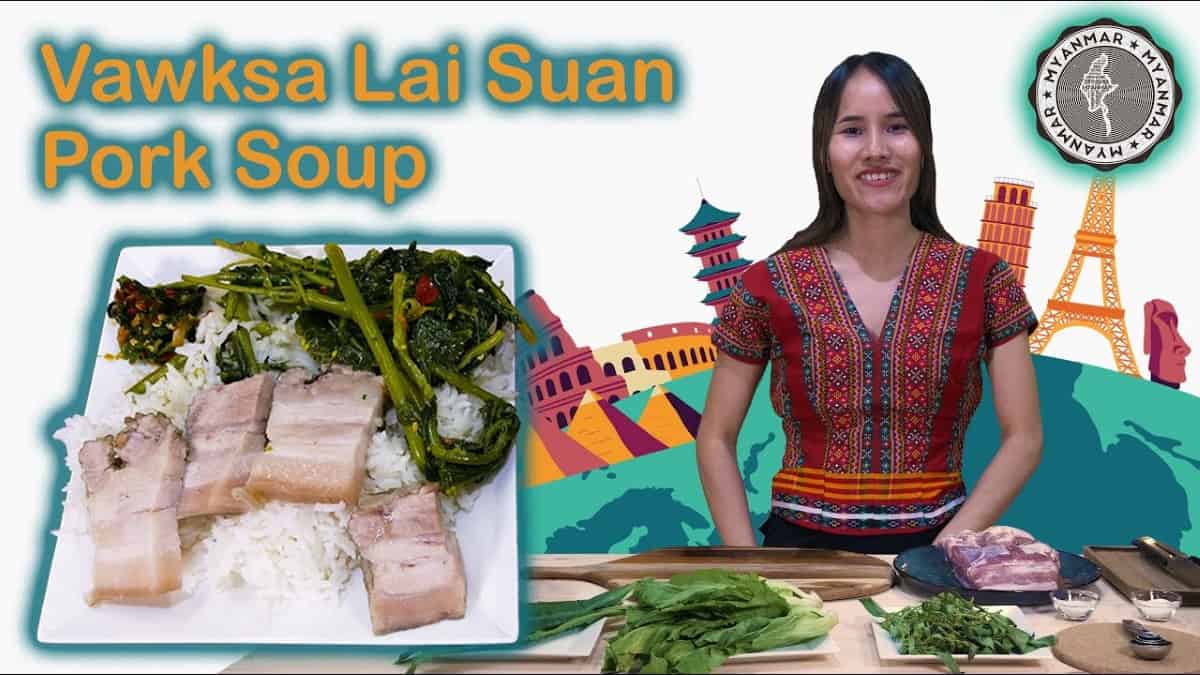As you may have noticed in our last Progress Report, we mentioned a brand-new video series: a Final Frontiers cooking show! We’ve wanted to do an international cooking show for many years so you could see some of the intriguing ethnic dishes we’ve found in our travels around the world. Now, if you’re adventurous enough to try cooking on your own, you can get a taste of the types of food our national church planters, as well as the children in our Touch A Life feeding program, sometimes eat.
We’ve sent out requests to many of our national directors, especially where we have TAL, asking for either their favorite meals or the ones they feel are the most culturally important. We’ve then studied a suggested recipe, along with other cooking secrets we can track down, to give you a balanced and authentic presentation of the dish we are making. In several cases, some of our contacts have even sent us helpful home videos that show exactly how they cook it themselves. Often, we go to Arabic, Indian, or Asian grocery stores to find certain foods, but I think you’ll be surprised just how many ingredients can be acquired right in your own grocery store.
My wife, Lily Martyn, hosts this cooking show. She grew up in the Southeast Asian country of Myanmar, attended Bible college, and worked in a missions ministry there, where she always enjoyed cooking. Now, she is here with us, studying and presenting exotic dishes from around the world. For each show, Lily wears one of her traditional Asian costumes, which consists of handmade skirts and blouses sewn in her country.
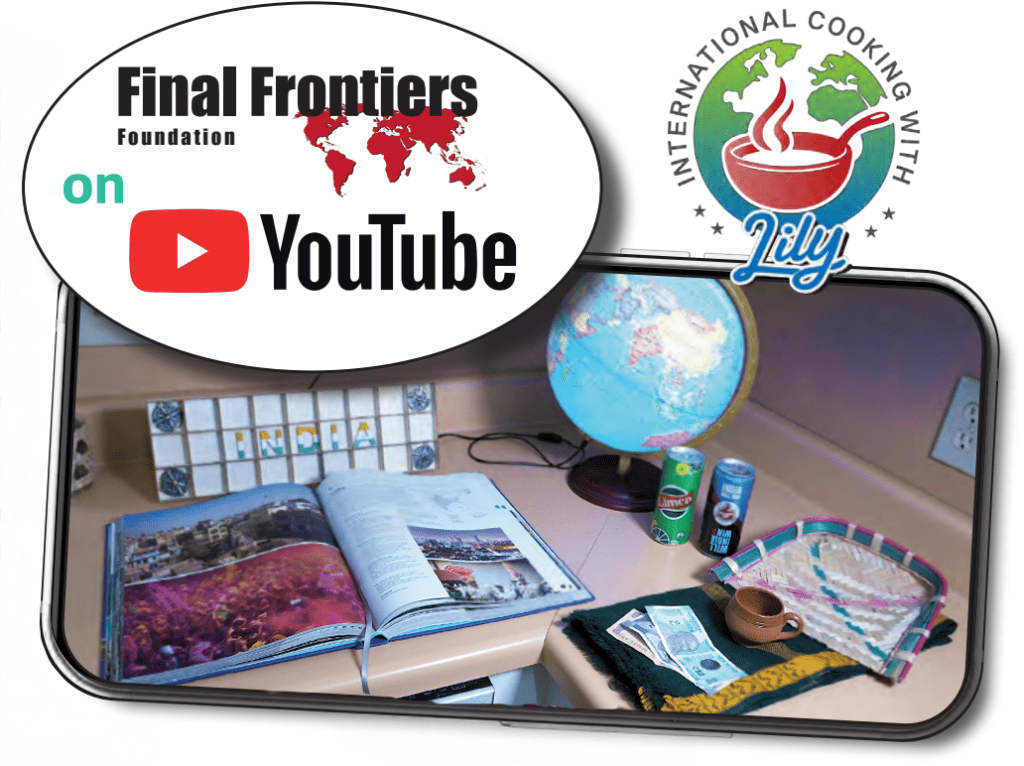
One aspect that sets our show apart is the country facts at the beginning of each episode. Right from the start, you can learn something new and informative about the land where the food originates. We also have real items from each country displayed on the back counter. In the show notes of each episode, you can read details about every piece that is on display, including the exchange rate of their local currency when it is shown.
Another added feature comes in the episodes where she cooks cuisine from a region in which we have an active TAL feeding program. In these special episodes, we have a video call from one of our directors in that country who tells how many children we feed there and confirms the authenticity of the meal.
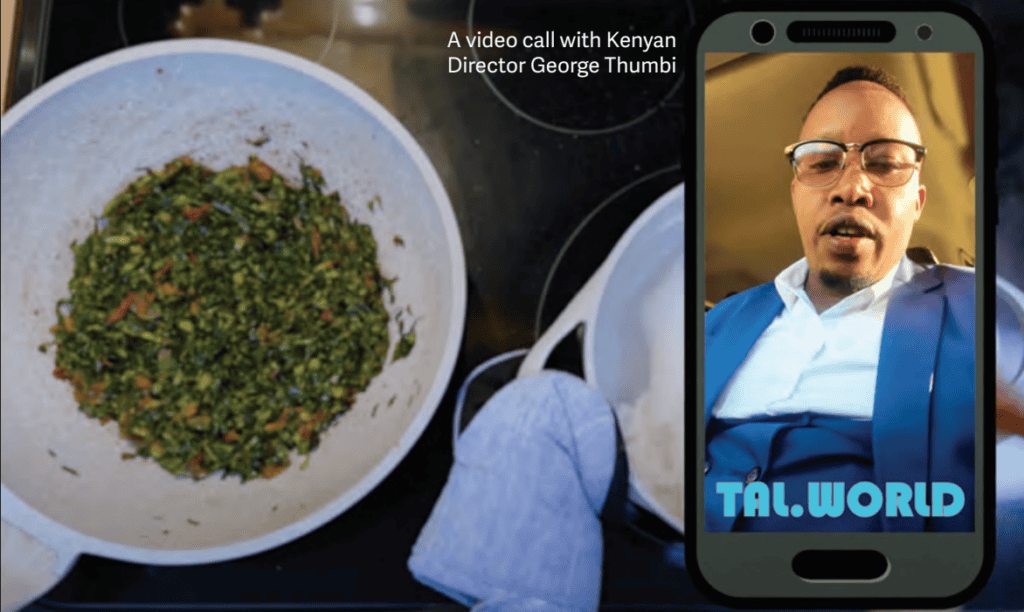
One of the bonuses for a series like this is that it can be used in your missionary conferences. When I was growing up, my church always held an annual mission conference, accompanied by what we called the “all nations supper.” My father always had the Philippines table with both boiled and fried squid sitting alongside coconut cookies. If your church has something similar, you could certainly get all your meals from this one single playlist where Lily shows you exactly how to make them. Also, in the video description with each episode comes a link to a set of full-color recipe pages, which include photos and simple step-by-step instructions.
So far, we’ve produced three videos and six shorts from three different countries: ‘Vawksa Lai Suan’ from Myanmar, ‘Sukuma and Ugali’ from Kenya, and ‘Dolma’ from Azerbaijan. The next show scheduled for release will be ‘Ambur Biryani’ from India.
We hope you will come and visit the Final Frontiers YouTube channel, where you can always learn something new about the people and places where you support the furtherance of the gospel!
See you soon, and bon appétit!
Recipe For Dolma
Stuffed Cabbage and Grape Leaves
Prep Time: 45 Minutes
Cooking Time: 30-40 Minutes
Servings: 5-6
Ingredients
1 large green cabbage
1 jar of grape leaves (or at least 30 fresh ones)
1 lb. ground beef
1 1/2 cups short grain rice
1 large yellow corn
1/2 cup fresh cilantro (or 1 tsp. dry)
1/2 cup fresh dill (or 1 tsp. dry)
1 Tbsp. fresh mint (or 1 tsp. dry)
1 Tbsp. fresh thyme leaves (or 1 tsp. dry)
1 tsp. tumeric
1 tsp. salt
5 Tbsp. vegetable oil
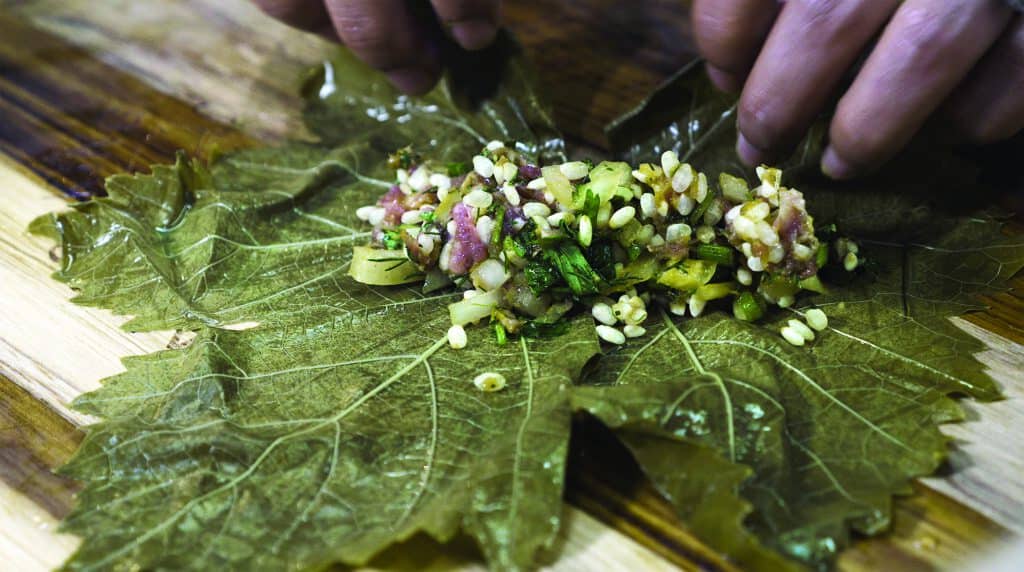
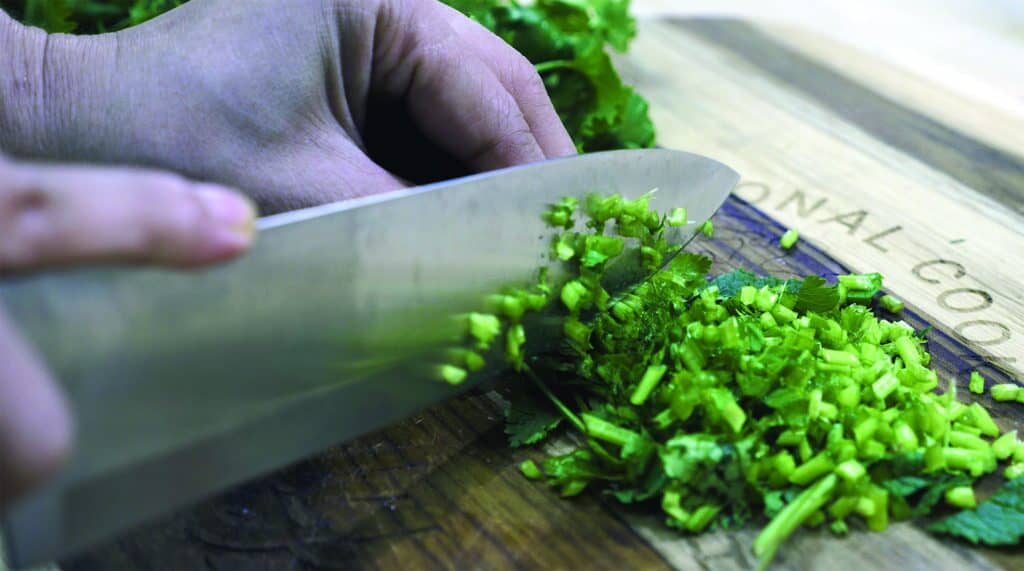
Preparing The Grape Leaves
Individually rinse the grape leaves if they are coming from a jar. (if you have fresh leaves, boil at least 30 of them in water with a pinch of salt for 1 1/2 minutes, then rinse.)
Remove the tiny stem for each leaf and keep them ready in a pile.
Preparing The Cabbage
Remove the hard inner core from the head of the cabbage.
Fill a large pot with 5 cups of water and bring to a boil.
Let the cabbage boil for 15 minutes. (Be careful not to overcook it, which would make it too soft and easily torn.)
Remove the cabbage and let it cool, then separate the leaves.
Trim off the spines on the back of each leaf, being careful not to cut all the way through. (The petiole stems only need to be ‘trimmed’ so the leaves are smoother, flatter and easier to roll.)
Finally, stack them in a pile and keep them ready.
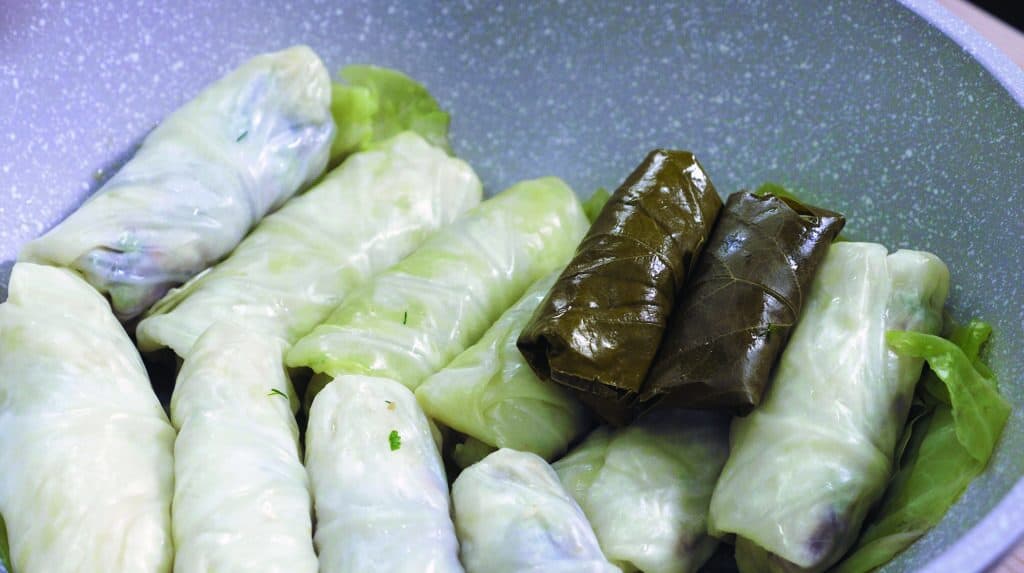
To see the rest of this recipe click here.










